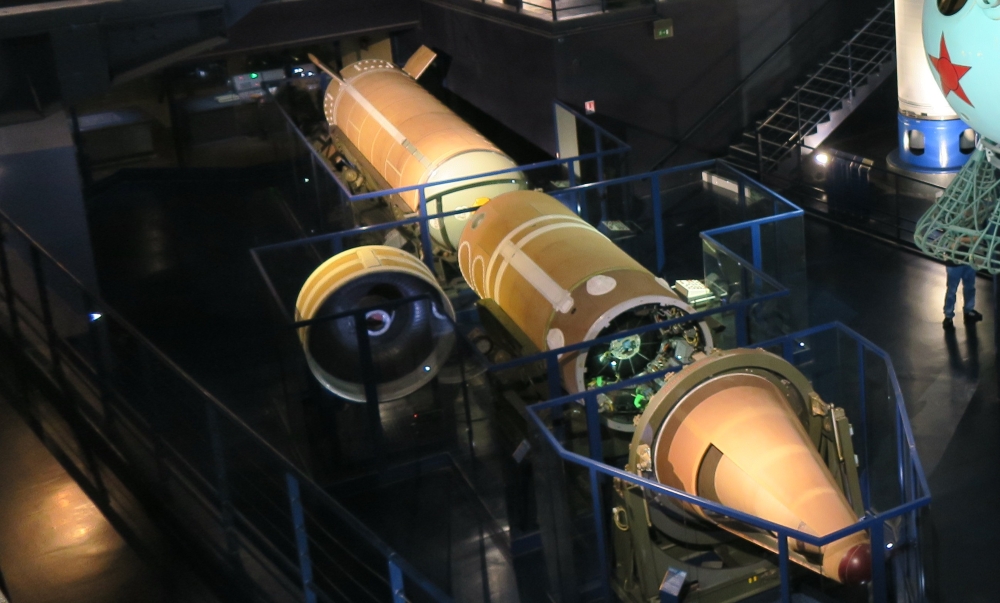
France is embarking on an ambitious ballistic missile development programme that represents both a renewal of the nation's deep-strike capabilities and a strategic pivot following decades of arms reduction. The Missile Balistique Terrestre (MBT) programme signals France's determination to field conventional medium-range ballistic missiles capable of engaging targets at distances exceeding 2,000 kilometres by 2030. France has committed approximately €1 billion euros to the Missile Balistique Terrestre (MBT) programme, marking a significant financial investment in restoring conventional land-based ballistic strike capabilities. The General Directorate for Armaments confirmed that precise specifications for the tactical-operational increment of the Long-Range Strike-Terrestrial programme remain under development, with convergence work ongoing regarding maximum range specifications. Initial expenditure proves modest - €15.6 million in 2026, €20 million in 2027, and €44 million in 2028 - with the substantial investment of €820 million deferred beyond 2028.
France's ballistic missile expertise stems from decades of strategic weapon development that began in the 1960s with the creation of the Force de Dissuasion. The nation demonstrated formidable technical competence through programmes including the submarine-launched M-series missiles and the land-based Sol-Sol Balistique Stratégique (SSBS) systems. The S2 missiles entered service in 1971, followed by the more advanced S3 intermediate-range ballistic missiles in 1980 (pictured), which were deployed at the Plateau d'Albion facility in southern France.
These land-based strategic missiles represented a cornerstone of French nuclear deterrence for over two decades. The S3 missiles, equipped with single 1.2-megatonne thermonuclear warheads and capable of striking targets at ranges up to 4,000 kilometres, provided France with an instant and permanent retaliation capability from national soil. However, strategic circumstances evolved dramatically following the Cold War's conclusion.
In February 1996, France announced the complete abandonment of its land-based nuclear missile component, reflecting the transformed security environment. The decommissioning process began in September 1996 and culminated in February 1998 with the complete denuclearisation of the Plateau d'Albion. The operation involved dismantling 18 strategic S3D missiles.
France's renewed interest in ballistic missile capabilities is triggered by lessons learned from recent conflicts, particularly the Russia-Ukraine war and Israel-Iran confrontations. The French Ministry of Defence has identified deep precision-strike (DPS) capabilities as essential elements of its "very high altitude" strategy, targeting the operational domain between 20-100 kilometres above sea level. This strategic framework envisions advanced weapon systems that utilise high altitude to evade mid-course defences while incorporating manoeuvrable capabilities to overcome terminal-phase interceptors. The requirement encompasses suppression of enemy air defence missions and engagement of high-value targets, capabilities deemed increasingly vital in contemporary threat environments. France's approach represents a conscious effort to develop sovereign conventional strike capabilities that complement rather than replicate existing NATO assets, particularly as Germany pursues US TOMAHAWK acquisition through the TYPHON system – which is, however, a cruise missile.
The MBT programme addresses multiple strategic imperatives. Firstly, it provides France with autonomous conventional long-range strike capabilities that reduce dependence on allied systems. The programme demonstrates French commitment to technological sovereignty in critical defence domains, particularly given ArianeGroup's dual expertise in space launch systems and strategic missile development. The initiative also reflects broader European strategic autonomy aspirations, though France appears prepared to proceed independently despite limited immediate European partner interest. The programme represents a matter of national prestige while addressing practical military requirements for conventional precision-strike capabilities that complement France's nuclear deterrent.
Significantly, the MBT programme leverages France's continuing ballistic missile industrial base, which remains active through the ongoing M51 submarine-launched ballistic missile (SLBM) upgrades. This industrial continuity provides technological foundations and manufacturing expertise that would otherwise require substantial reinvestment to recreate.
The French National Assembly's Defence Commission has provided authoritative backing for the ballistic missile programme through its comprehensive report on artillery presented by deputies Matthieu Bloch and Jean-Louis Thiériot in April 2025. The report identifies France's capacity gap in terrestrial precision strikes within operational depth as a critical vulnerability that must be urgently addressed. The parliamentarians emphasise that while France possesses air-to-surface and sea-to-surface strike capabilities through SCALP and MdCN cruise missiles, these weapons remain limited in quantity and confined to subsonic trajectories, making them increasingly vulnerable to modern air defence systems.
The Defence Commission's analysis strongly advocates for ballistic missile technology over cruise missiles when budgetary constraints necessitate choosing a single solution. This preference stems from operational assessments suggesting that ballistic missiles achieve significantly higher penetration rates against adversary air defences compared to cruise missiles, as demonstrated in the Russia-Ukraine conflict. The hypersonic velocities attained by ballistic missiles during their terminal phase render them considerably more difficult to intercept despite their more detectable parabolic trajectories. The commission notes that a ballistic missile's flight path need not account for the precise positioning of enemy surface-to-air defence systems to the same degree as terrain-following cruise missiles, conferring substantial advantages in mission planning and reactive theatre-level operations.
The parliamentary report reveals that France's General Staff favours a ballistic system with ranges exceeding 2,000 kilometres, aligning with discussions within the European Long-Range Strike Approach initiative. The commission heard testimony from ArianeGroup, the primary contractor for the Missile Balistique Terrestre concept, emphasising France's existing industrial competencies in ballistic missile technologies derived from the M51 submarine-launched ballistic missile programme. This industrial heritage provides France with a distinct competitive advantage in rapidly fielding sovereign ballistic capabilities that other European nations lack.
However, the deputies issued cautionary observations regarding programme costs and acquisition quantities. They note that exclusive French procurement of a long-range ballistic missile system risks producing prohibitively expensive unit costs, potentially limiting stocks to strategically significant missions rather than enabling operational-level employment. The report candidly acknowledges that while most European allies have already procured foreign artillery rocket systems - primarily US HIMARS or Israeli PULS launchers - these procurement decisions paradoxically narrow export prospects for French sovereign solutions while simultaneously demonstrating urgent European demand for deep-strike capabilities.
The commission underscores that any terrestrial deep-strike capability must integrate within a comprehensive joint fires architecture requiring reinforced targeting capabilities, tight coordination with aerospace forces for airspace deconfliction, and robust command-and-control systems enhanced by low-Earth-orbit satellite connectivity. The deputies advocate for complementing the ballistic missile programme with increased cruise missile stocks for the Air and Space Force and Navy, creating synergistic effects through mixed salvoes combining cost-effective saturation munitions with high-end penetrating systems. This parliamentary endorsement provides political legitimacy and budgetary justification for the programme while establishing clear expectations that France's ballistic missile development must balance technological sovereignty against fiscal realism and operational mass.
The development timeline targets operational capability by 2030, though this ambitious schedule will require sustained industrial investment and government commitment. France must expand its ballistic missile production capacity to accommodate the programme, presenting significant industrial challenges in the absence of substantial international partnership participation. Funding arrangements remain under development, though the programme aligns with France's 2024-2030 Military Programming Law priorities.
While challenging industrial and financial obstacles remain, France's historical ballistic missile competence and continuing nuclear deterrent programmes provide substantial foundations for success. Should the the programme succeed, its progression would significantly influence European conventional strike capabilities and strategic autonomy development over the coming decade.








.png)
